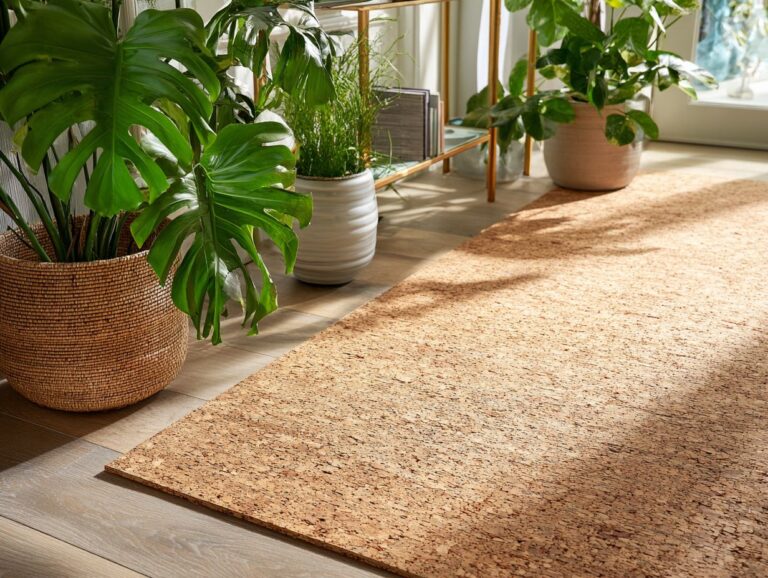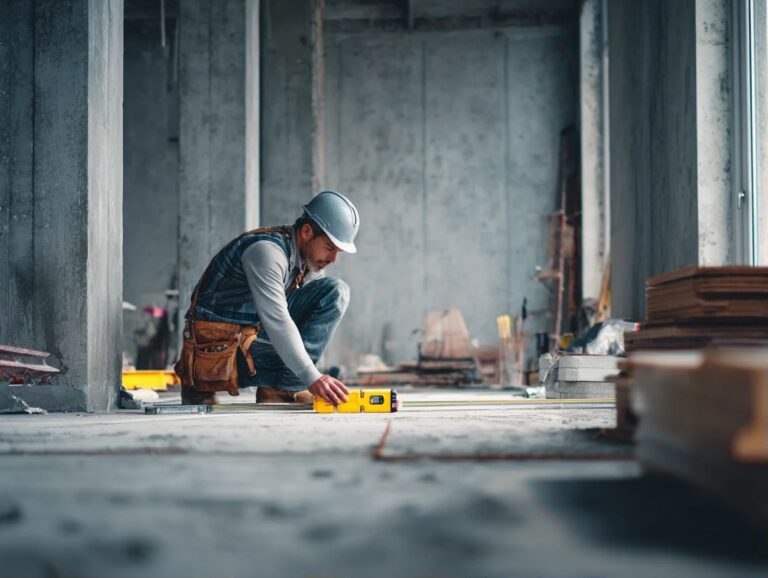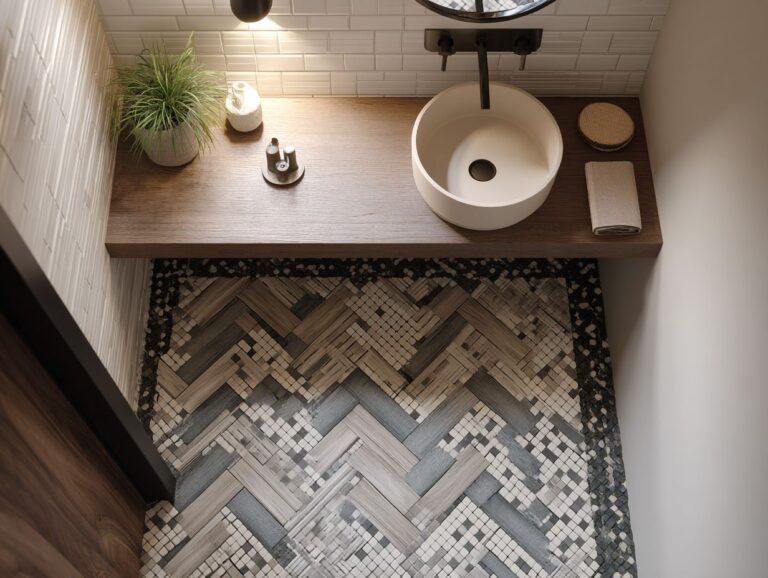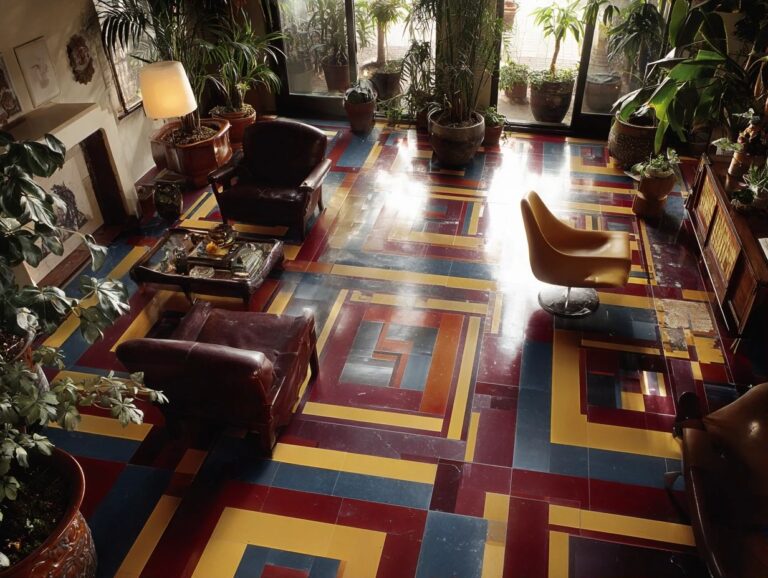Flooring Pattern Effects – Visual Impact Guide
Learn how different flooring designs can change the look of your room with impressive visual effects! In this guide, we’ll look at how wood-look flooring and luxury vinyl from Greg Stone Flooring imitate real wood and improve your home design. Whether you’re updating a room or decorating a new home, you’ll learn how to choose the right flooring pattern to improve your space and make a strong impact.
Key Takeaways:
Contents
- Patterned Flooring Impact Statistics
- Types of Flooring Patterns
- Factors Influencing Visual Impact
- Psychological Effects of Flooring Patterns
- Practical Applications of Flooring Patterns
- Choosing the Right Pattern for Your Space
- Frequently Asked Questions
- What is the purpose of the Flooring Pattern Effects – Visual Impact Guide?
- How does flooring pattern affect the overall appearance of a room?
- Are there any guidelines for choosing the right flooring pattern?
- Can flooring patterns be used to create the illusion of space?
- Are there any flooring patterns that are better suited for high-traffic areas?
- Can mixing and matching different flooring patterns be visually appealing?
Importance of Visual Impact
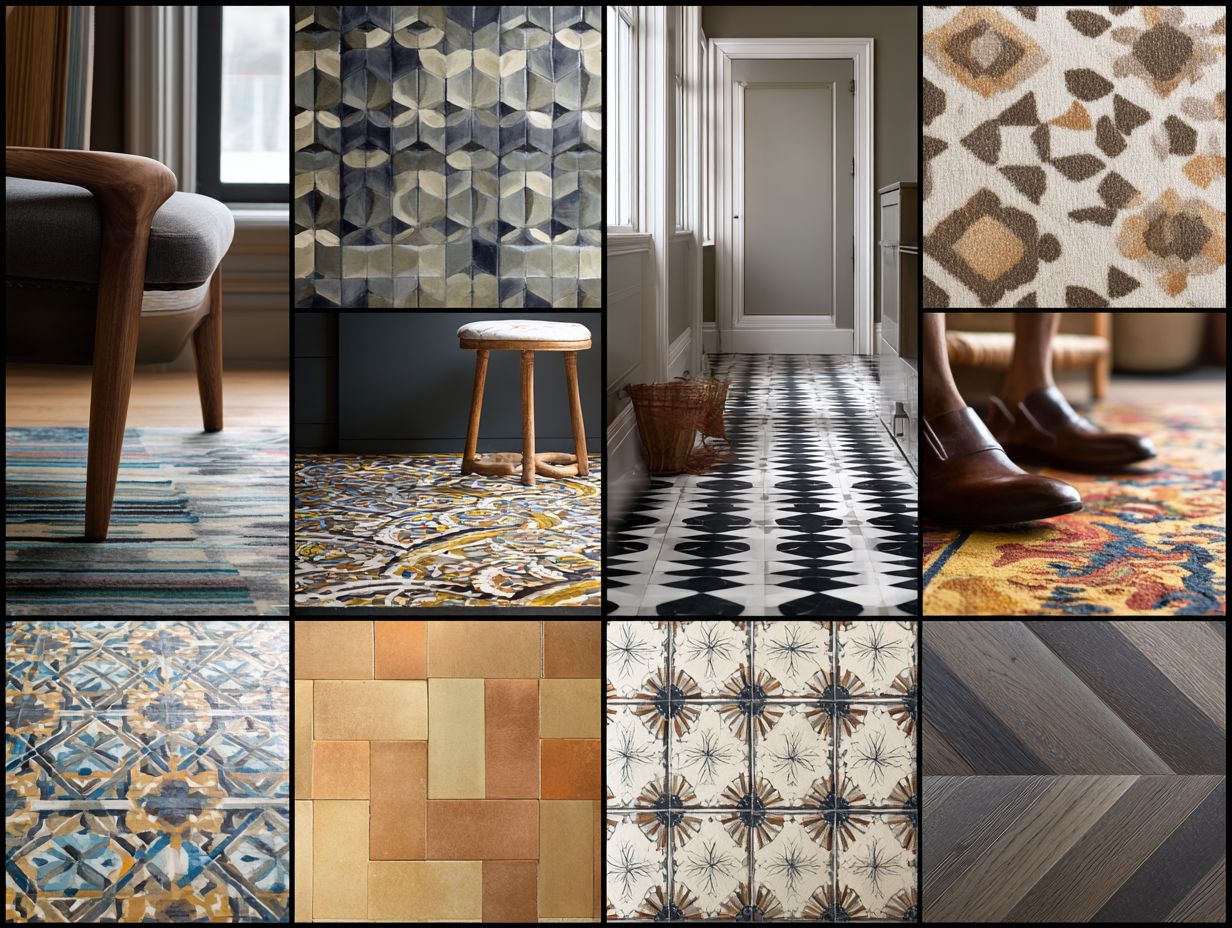
Selecting the right flooring design can improve a room’s appearance, making it look more attractive and spacious, which residents will appreciate.
For example, in stylish rooms, luxury vinyl planks can mimic hardwood appearance while being tough and easy to care for. Using herringbone patterns with gentle colors gives a dining room a sophisticated appearance.
Conversely, in rustic designs, wide plank wood flooring, especially in oak or reclaimed wood finishes, adds warmth and character. Using diagonal patterns can create the illusion of added space in smaller rooms, which works beautifully in open-concept layouts.
In the end, the design should match the home’s look and the mood you want to create.
Patterned Flooring Impact Statistics
Patterned Flooring Impact Statistics
Flooring Pattern Impact: Pattern Popularity and Trends
Flooring Pattern Impact: Perceived Room Changes
The Patterned Flooring Impact Statistics Data offers useful information on how patterned flooring impacts interior design, looking at its popularity, different styles, and how it affects the look of rooms.
Flooring Pattern Impact highlights that patterned flooring is used in 50% of interior design projects, indicating its significant role in contemporary decor. This common use shows that designers and homeowners appreciate the visual appeal and lively features that patterns add to a room. Furthermore, with 20 different pattern styles available, there is considerable variety for customization and personalization, catering to diverse tastes and design preferences.
- Perceived Room Changes: Patterned flooring has a notable impact on how spaces are perceived. An improvement in perceived space size by 30% is reported, indicating that certain patterns can create an illusion of a larger room. This effect can be especially helpful in small rooms, making them seem larger and more spacious.
- Improvement in Room Atmosphere: An even more significant effect is the 75% improvement in room atmosphere. This statistic shows how patterned flooring can greatly improve the look and atmosphere of a room, making it more welcoming and visually appealing.
The Patterned Flooring Impact Statistics demonstrate the substantial role that flooring patterns play in interior design. Patterned flooring is popular and comes in different styles. It improves how big a space looks and boosts the feel of a room, making it important for any design plan.
Overview of Common Flooring Patterns
Familiarity with common flooring patterns-like herringbone, chevron, and basketweave-allows homeowners and designers to make informed choices.
The herringbone pattern uses rectangular planks aligned in a staggered zigzag design, offering a visual style that suits modern and classic settings.
Chemvron, similar but distinguished by V-shaped joins, offers a more formal look, often used in high-end residences.
Basketweave combines smaller squares for a textured appearance, ideal for smaller areas or as borders.
Knowing these patterns can help choose the right style for your home, affecting both the look and feel of the space.
Types of Flooring Patterns
Knowing the different kinds of flooring patterns helps you make better design choices suited to specific interior styles and room uses.
Straight Lay
The straight lay pattern is known for its simple and traditional look, making it one of the easiest choices for any flooring project.
To install a straight lay pattern effectively, measure your space and calculate how much flooring you’ll need, typically costing between $3-$5 per square foot, including labor.
Begin by preparing the subfloor-ensuring it’s clean, dry, and level. Lay the first plank along the longest wall, then continue placing planks in a straight line, ensuring to stagger joints for structural integrity.
A saw can be used to cut ends smoothly, and a taping block ensures planks are aligned correctly. On average, an area of 1,000 square feet may take around 8-12 hours to complete, depending on familiarity with the process.
Diagonal Lay
Diagonal flooring patterns can give rooms a sense of movement, helping them look bigger and more interesting.
This installation method requires cutting boards at an angle, which can make them look more interesting but has some difficulties.
Exact measurements are required, but they could slow down the installation process. Costs can be about 10% higher than traditional straight-lay installation, primarily due to the complexity of cutting and fitting the boards.
Homeowners should consider these factors and possibly consult professionals for the best outcome. To cut accurately in a straight line, use tools like a miter saw and a chalk line.
Herringbone
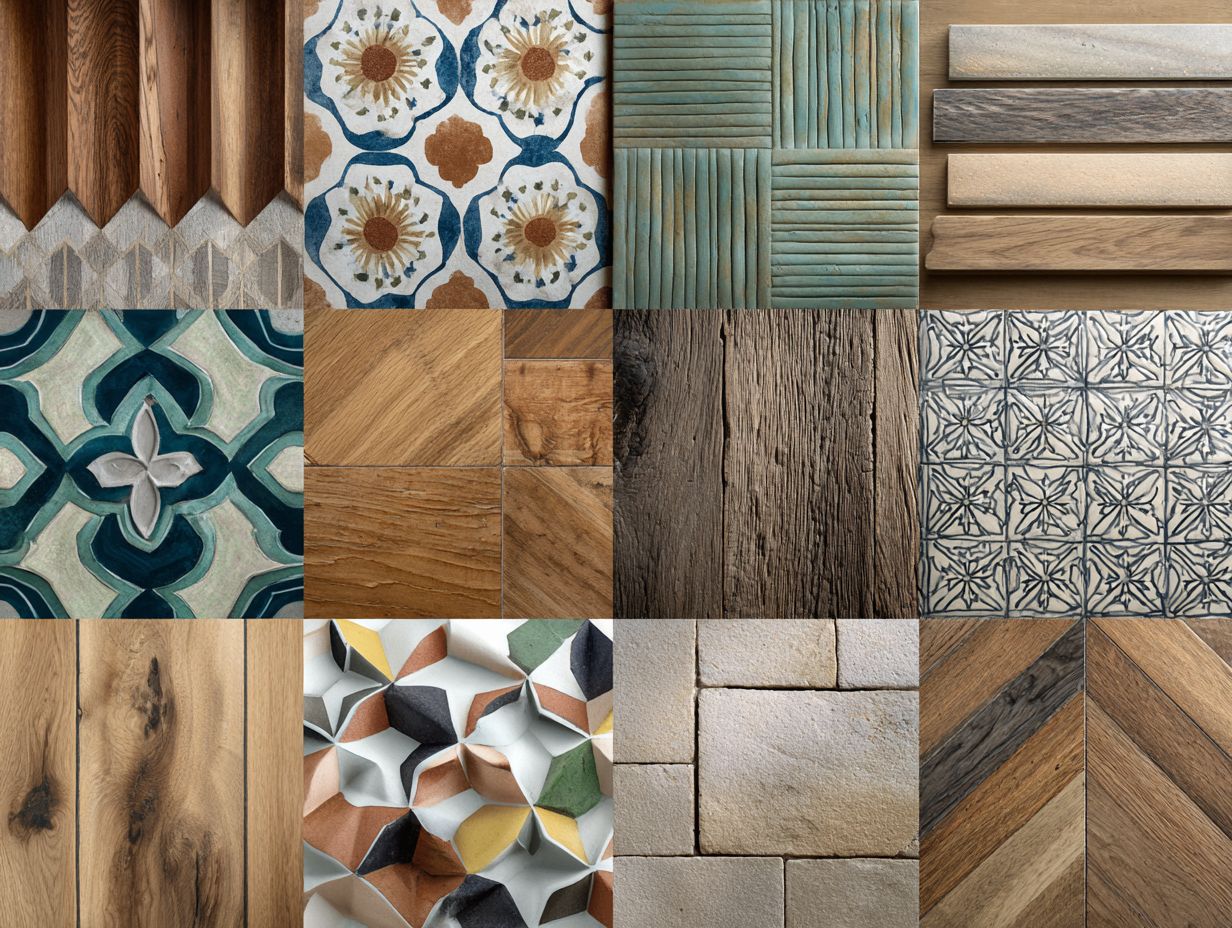
Herringbone flooring is well-known for its complex pattern that brings elegance and visual appeal to both contemporary and traditional interiors.
- To install herringbone flooring successfully, first, choose the right material-wood or tile are popular options.
- Next, make an exact plan by measuring the area and drawing lines on the floor base. Start by positioning the first row at a 45-degree angle to form the traditional pattern. Use a high-quality adhesive or nails, depending on the material.
- Consider incorporating complementary design elements, like a herringbone backsplash in the kitchen or accent walls, to unify the aesthetic.
Projects in high-end residential designs showcase the timeless appeal of herringbone, proving its versatility.
Chelon
The chevron pattern offers a modern choice compared to herringbone, featuring continuous V-shaped designs that bring energy to rooms.
To improve the look of your interiors, try chevron-patterned wallpaper or area rugs.
Installation of wallpaper typically costs between $40 to $100 per roll, while rugs can range from $50 to upwards of $500, depending on size and quality.
To do it yourself, make sure your surface is smooth and clean, and spread the paste evenly. To help rugs last longer, vacuum them often and clean up spills quickly.
For wallpaper, gentle cleaning with a damp cloth can help preserve vibrancy without damaging the pattern.
Basketweave
Basketweave designs add a textured and detailed appearance that fits perfectly in both relaxed and formal environments.
This flexible design works well with different styles, including classic settings with deep wood tones or modern areas with smooth furniture.
Consider using basketweave in areas like backsplashes or flooring to create depth. Installation typically requires a professional for best results, costing around $5 to $15 per square foot, depending on material choice.
For DIY fans, peel-and-stick tiles make the job easier and affordable. Basketweave brings a unique charm that complements any aesthetic.
Brick Lay
The brick lay pattern improves the traditional look and lets you try different styles that fit various rooms.
This pattern is commonly used in flooring, backsplashes, and feature walls.
To install, begin with a clean, leveled surface and lay your first row of bricks using a thin-set mortar. To make sure things are straight, use a level and spacers to keep the gaps equal.
After the adhesive sets, grout between the bricks for a polished finish.
A traditional red brick offers a charming rustic look, while whitewashed bricks create a modern, airy feel. The brick lay pattern adds texture and depth, giving any room more character.
Factors Influencing Visual Impact
The look of flooring patterns is greatly influenced by color choices, texture, and room features. Those curious about how different shades can affect the ambiance might appreciate our Light vs Dark Flooring – Impact on Room Ambiance.
Color Selection
Choosing the right color for flooring can make or break an interior design, influencing mood and room perception dramatically.
For a calming effect in bedrooms, consider soft, neutral tones like light gray or beige, which pair beautifully with pastel decor.
On the other hand, bright colors like deep blue or green can bring energy to a living room, especially when paired with warm wood furniture.
Use tools like color samples or apps like Benjamin Moore’s Color Capture to see how different colors look together. Keep in mind that sunlight changes how colors look. Check your options in different lighting conditions before deciding.
The right color brings together the flooring, furniture, and decor.
Texture and Material
The texture and material of flooring impact both how long it lasts and how pleasing a room looks.
Luxury vinyl, for instance, mimics natural materials with stunning visual effects while offering water resistance and easy maintenance. Its soft texture makes it comfortable to walk on, perfect for living rooms and kitchens.
On the other hand, reclaimed wood brings a rustic charm and unique character, with each plank offering a story of its own. It requires regular oiling to maintain its beauty.
The decision to choose between luxury vinyl and reclaimed wood will depend on your design preferences, how much upkeep you want, and your budget.
Room Size and Shape
The size and shape of a room are important in deciding which flooring patterns will improve the design effectively.
For smaller rooms, consider diagonal patterns; they create an illusion of more space by drawing the eye outward. Conversely, wide planks running parallel to the longest wall can help elongate narrow spaces.
In a square room, a checkerboard pattern can add a fun element without dominating the look. Make sure the pattern matches the room’s natural light and the style you want, whether it’s modern, rustic, or traditional.
Trying samples in the room helps you see the end result before deciding.
Lighting Conditions
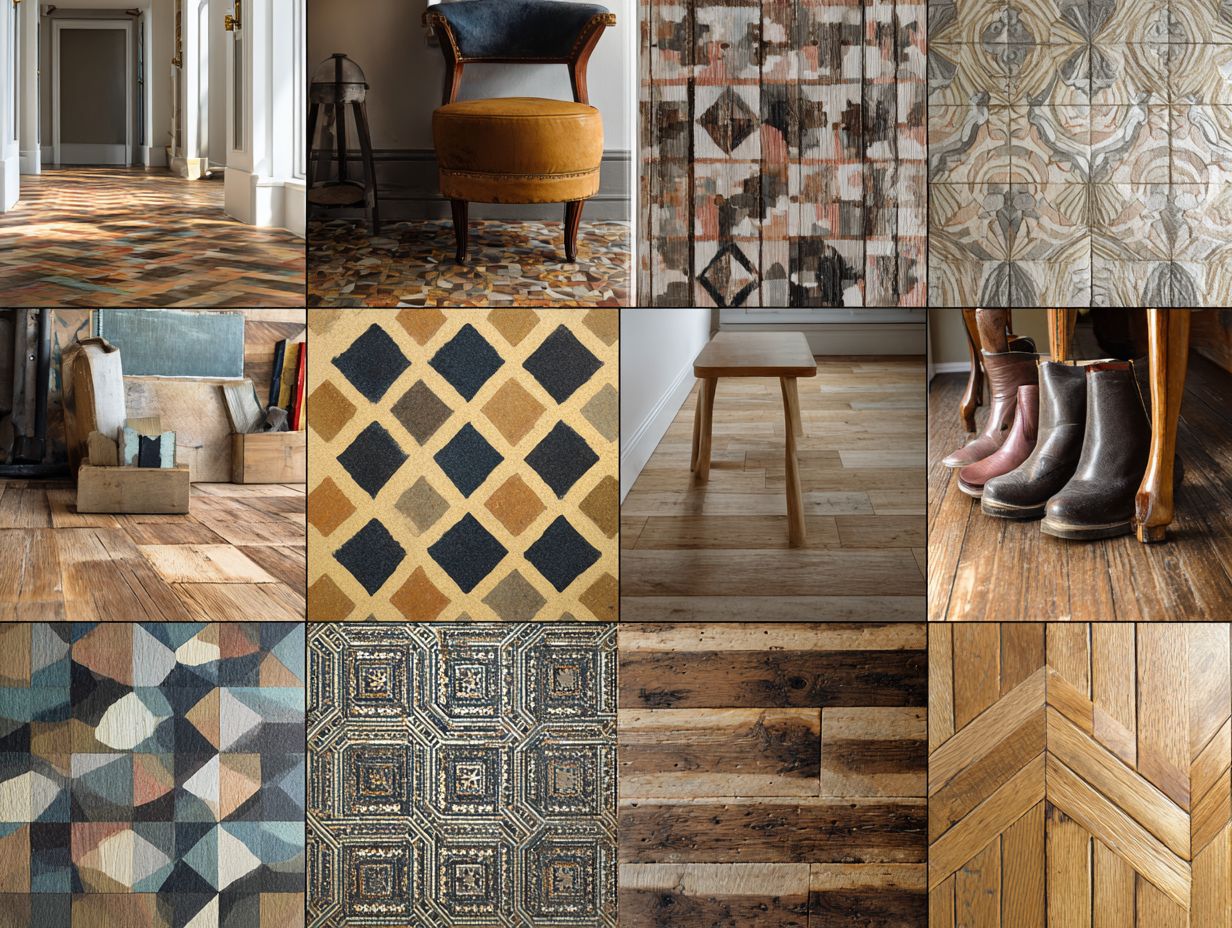
Lighting, whether from the sun or indoor lights, greatly affects how floor designs look in terms of their color and feel.
To improve the look of your floors, try these methods:
- Use sheer curtains to allow sunlight to shine on your floors, enhancing the brightness of colors.
- For artificial lighting, use warm LED bulbs to create a cozy atmosphere that complements wood or laminate floors.
- Think about the flooring layout; lighter patterns can make a room feel larger, while darker hues add depth.
- Experiment with different angles of light to see how the flooring shifts throughout the day to achieve the desired effect.
Psychological Effects of Flooring Patterns
Flooring designs can affect people’s feelings and how they behave in a space. Choosing the right color scheme can significantly impact room ambiance, as explored in our insights on light vs dark flooring.
Creating Depth and Space
Certain flooring patterns can create a sense of depth, making a space look bigger.
For instance, a diagonal pattern can visually elongate a narrow space, while a herringbone pattern adds visual interest and movement, creating an inviting atmosphere.
To create these effects, try using lighter-colored planks that bounce light; this can make the area seem larger.
Make sure the planks are installed with even gaps and aligned seams to prevent a messy appearance.
Using a chalk line to mark and a miter saw to cut precisely can help you get clean lines and a smooth finish.
Influencing Mood and Ambiance
The choice of flooring patterns plays a critical role in setting the mood and ambiance of a room, affecting overall comfort and usability.
For instance, wide planks with horizontal lines create a sense of spaciousness and warmth, ideal for living areas. On the other hand, herringbone patterns can create a stylish and polished look, making them perfect for entryways or dining rooms.
To select the best design, think about how colors affect mood; warm colors like reds and yellows increase energy, while cool colors like blues and greens encourage relaxation.
Using tools like design software or color swatches can help visualize the impact of different patterns in your space.
Practical Applications of Flooring Patterns
Knowing how flooring works in real-life settings helps make good choices for homes and businesses.
Residential Spaces
In residential spaces, flooring patterns can reflect personal style while also enhancing functional benefits like durability and maintenance ease.
Patterns like herringbone and chevron look stylish but require careful installation, increasing labor costs. A straight lay pattern looks modern and clean. It is easier to install, which helps save money.
Consider using large tiles in open areas to create a seamless flow, which can visually expand the space. A case study in a suburban home showed that the use of a distressed wood look in a staggered pattern minimized visible wear while maintaining a rustic charm.
Commercial Spaces
Commercial spaces need flooring designs that look good and can resist heavy use and wear over time.
Selecting the correct flooring type is very important.
Options like luxury vinyl tile (LVT) provide resilience and a variety of design choices, suitable for retail and hospitality settings due to their water resistance and easy maintenance.
For environments like gyms or schools, rubber flooring is preferred for its shock absorption and durability.
Carpet tiles can offer both comfort and flexibility in office spaces, allowing for easy replacement in high-traffic areas.
Assess each option based on your specific industry needs, balancing durability with design appeal.
Choosing the Right Pattern for Your Space
Picking the right flooring pattern requires looking at your own design taste and the features of the room.
Assessing Your Design Style
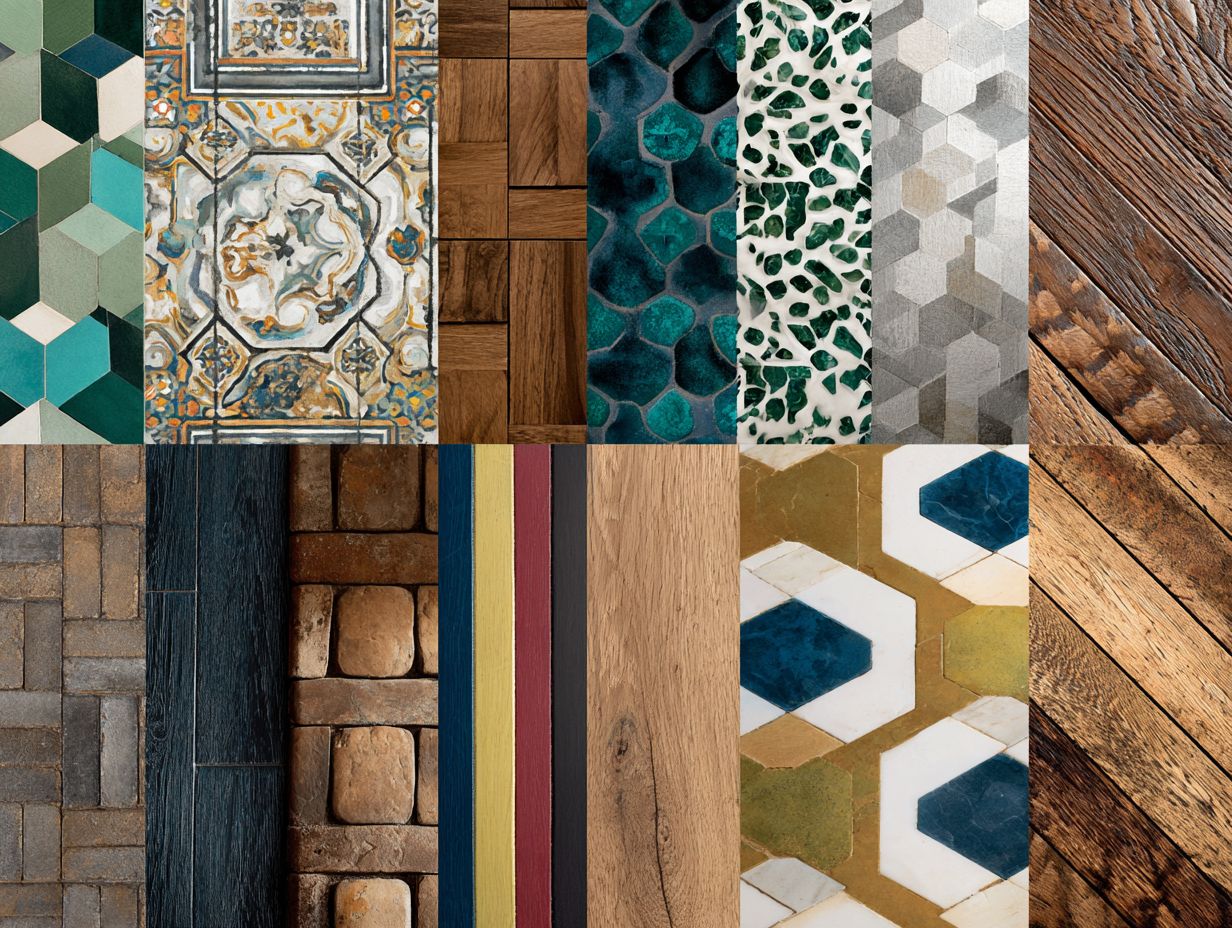
Checking what you like in design is essential for choosing flooring designs that fit your vision for the room.
Consider how different design themes can influence your flooring choices.
For a modern aesthetic, opt for sleek, polished concrete or wide-plank oak; these materials embody minimalism. In contrast, a rustic theme shines with reclaimed wood or distressed tiles, adding warmth and character.
To align your flooring with your style, visit showrooms or use design tools like Houzz to visualize your selections in context. Sample swatches can help you see how various patterns play with light and dcor in your space.
Consulting with Professionals
Getting advice from flooring experts can give you helpful advice specific to your area and design preferences.
These experts have specific knowledge about different materials like hardwood, laminate, or tile, helping you choose options that balance strength and appearance.
For instance, they can assess factors like foot traffic and moisture levels in your home, ensuring you select the most suitable flooring type. They often have access to exclusive materials and installation partners, potentially saving you time and money.
Their knowledge can improve how you make decisions, turning your area into a useful and attractive setting.
Frequently Asked Questions
What is the purpose of the Flooring Pattern Effects – Visual Impact Guide?
The Flooring Pattern Effects – Visual Impact Guide serves as a reference for selecting the most visually appealing flooring patterns for a space.
How does flooring pattern affect the overall appearance of a room?
Flooring pattern can greatly impact the visual impact of a room, as it can create a sense of depth, add texture, and contribute to the style and design of the space.
Are there any guidelines for choosing the right flooring pattern?
Yes, the Flooring Pattern Effects – Visual Impact Guide provides guidelines and recommendations for selecting the most suitable flooring pattern based on the type of space and desired visual impact.
Can flooring patterns be used to create the illusion of space?
Definitely, certain flooring patterns such as diagonal or chevron can create the illusion of a larger space by elongating the room and drawing the eye towards the corners.
Are there any flooring patterns that are better suited for high-traffic areas?
Yes, flooring patterns with smaller and busier designs, such as herringbone or brickwork, are more forgiving in high-traffic areas as they can mask dirt and wear better than larger patterns.
Can mixing and matching different flooring patterns be visually appealing?
Yes, combining different flooring patterns, such as using a border or transitioning from one pattern to another, can add interest and create a unique visual impact in a space.
